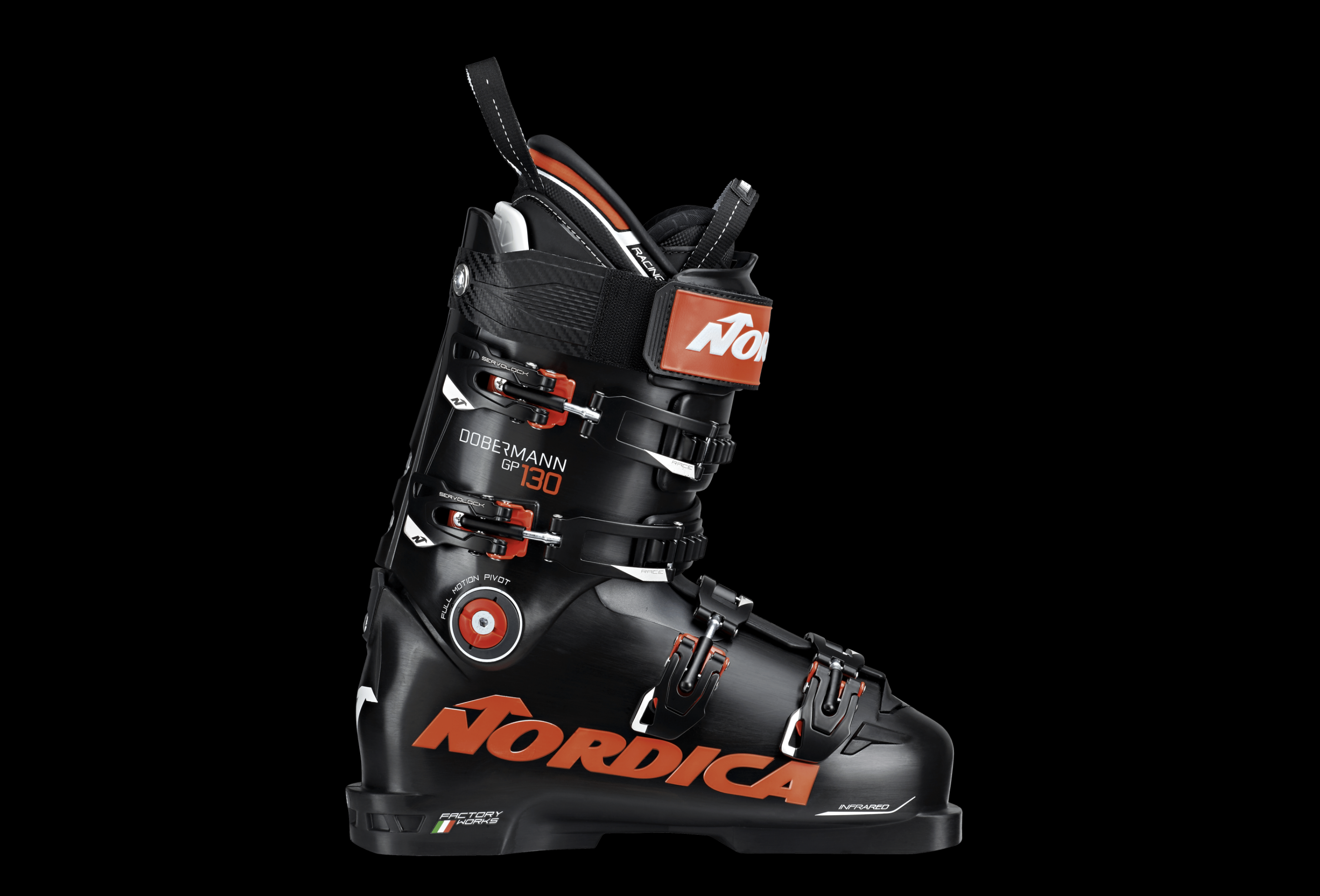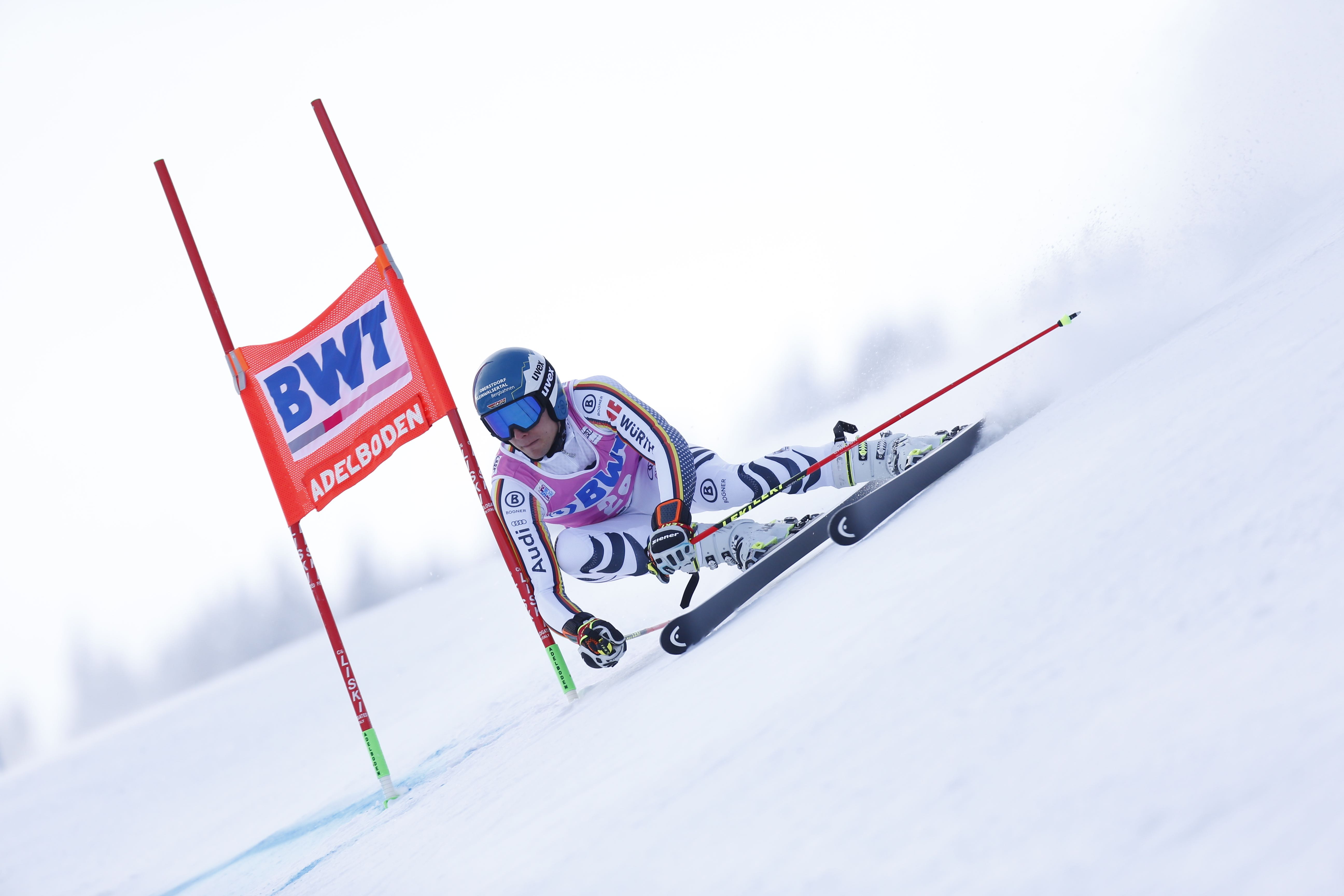
World Cup athletes use boots no non-racer should have to endure, but there are models that deliver elite performance in a fit environment meant for recreational skiing.
The road to hell is said to be paved with good intentions. In my experience, the friends and relatives of prospective boot buyers are a wellspring of wretched advice wrapped in bright ribbons of sincerity and concern.
(Let us pause a moment and prayerfully acknowledge the gratitude of bootfitters everywhere that the new, pandemic-driven bootfit protocol discourages the presence of a bootfit entourage composed of family, moral supporters and consiglieri.)
Back to the subject at hand, the particular nugget of advice I’m leery of is the customary admonition to avoid too stiff a boot as it will hurt, you’ll hate it eventually if you don’t detest it immediately, and it will inhibit your skills development. Get only as much boot as you need and no more, goes the conventional wisdom. Racers need stiff boots; you don’t.
We’ll get into what racers need at some future date. For the moment, let’s focus on the skilled recreational skier. At the top of the non-Race boot pyramid lies a class of boots that I call “Citizen 130’s.” To appreciate what I’m about to discuss you should know that a boot’s flex index – the “130” – is directly tied to its price: the higher the flex index, the stiffer the boot and the higher the price.
In the misty days of yore – say, 15 years ago – a boot emblazoned with a 130 on its side signified a race-caliber piece of footwear. Today the 130 is a marketing tool to indicate the top model in any family of recreational boots; it should indeed be firmer in forward flex than its lower-numbered kin, but that doesn’t mean the modern 130 is really all that stiff.
The reason the 130 number can be so fudge-able is that there are no standards governing boot flex, nor are they likely to materialize anytime soon. Not only is the issue of measuring boot flex deucedly difficult to pin down, but changing the status quo would endanger the current price structure, making it doubly unlikely that a boot flex standard will be adopted anytime soon.
The Best Boots Few Skiers Ever See
It may surprise you to learn that the 130’s of yore are still available, albeit in a sub-genre almost no one ever sees. Between the Citizen 130’s where the recreational boot market ends and true Race boots – known colloquially as “plug boots” for their shapeless, 92mm interiors – lies a hybrid class of Race spin-offs with more tolerable 96-98mm lasts, DIN-norm soles and flexes that are closer to what a racer expects, even if they bear the same numbers as their Citizen cousins.
To dip into the details for a moment, Tecnica, Nordica, Atomic, Lange, Salomon, Fischer and Dalbello all make a series of boots that borrow a race architecture but are otherwise more forgiving than plug boots. Head and K2 also offer 140’s that reside in this almost-Race genre-within-a-genre.
Why am I prattling on about boots you probably won’t find? Because I want you to know that this corner of the ski world exists, that you don’t have to settle for a mushy 130. I also want you to grok that all non-race boots are diluted. All of them. No citizen is asked to endure the requirements imposed upon serious racers.

Between the real-deal race boots worn by World Cup racers and those worn by mere mortals lies an almost invisible class of boots that deliver race-caliber precision to elite recreational skiers. Pictured here is the Nordica Dobermann GP 130.
Regardless of how stiff any particular Citizen 130 may be, it always represents the best technology available in its series. As soon as you step down to a 120, not only will the boot be softer, it will also be cheaper, which means some compromises have been made. The inner boot won’t be the same, nor will the top strap, and of course the shell’s plastic composition will be slightly degraded.
Moving further down the flex/price hierarchy introduces more compromises. Somewhere around a flex index of 90 or 100, the shell and cuff composition will change in order to meet a price expectation. The brilliant Jack Rafferty of Masterfit University, one of the world’s foremost experts in the bootfitting field, opines that the lowest flex an adult male should use is 110, regardless of skill level.
All these small deletions and substitutions serve to remind us that a ski boot consists of more properties than just its resistance to forward bending. Even more important than its forward flex is its lateral stiffness. A boot that’s too soft in flex can usually still be steered by tilting the column side-to-side, but a boot that’s too soft on all axes is no more supportive than an unlaced skateboard shoe.
The Definition of “Too Stiff”
While you digest that nugget, let’s examine the widely accepted notion that a boot that’s “too stiff” is always a bad idea. Pardon the whiff of Clintonian evasion, but that depends on what your definition of “too” is. For skiers with limited ankle range of motion, a stiffer boot is better as it makes the most of this skier’s limited ability to press forward.
To gauge whether or not a given boot is too stiff, you must be properly sized and positioned in the boot so your shin is pressed firmly into the tongue when in a comfortable stance. The perception of stiffness depends enormously on accurate sizing and skier stance. A skier who isn’t pinned against the tongue will feel a boot is too stiff when in fact they simply aren’t in the right position to engage it. When you’re re-aligned with the shaft of the boot, a boot that previously felt stiff will feel pliable.
While you have to able to press into the tongue, you don’t need to, nor do you want to, press too hard or travel too far to get the boot to transfer the skier’s applied force to the ski. If the boot is too soft, the skier’s force is dissipated by the sagging cuff, so the ski feels next to nothing, even when the skier feels he or she is giving it his/her all.
Boot shoppers often overlook the fact that what they’re buying in a new boot is its resilience, its ability to return to its unflexed position the instant forward pressure abates. Older boots, regardless of their appearance, lose this property as they age. If you begin with a boot that’s already flaccid, you’ll be skiing the next ten to twenty years in a boot that essentially doesn’t work.
Now that I’ve convinced you to get a stiffer boot, here’s the counter-argument: your skis and boots (and bindings) form a system. If you have a boot meant to exert pressure on the front of the ski, it’s important to know if your skis have a front to press into. If the ski’s forebody is rockered up to the toe piece, a stiff boot is overkill. Many skiers on fully rockered baselines ski from a centered (often squatting) stance, so the front of the ski is only engaged by accident. These skiers don’t need a stiff boot as much as they need a lesson and perhaps a new pair of skis they can actually control.
What It All Means
As long as the pandemic prevails, you’ll be discouraged from trying on every flex in the store, even if you have an idea of what model you want. It’s best to shoot your best shot out of the chute. My advice is, aim high. Start with a boot at least one flex index higher than what you currently estimate you require.
While the gist of this Revelation is that, in general, stiffer boots are better for you, this doesn’t mean that the stiffest boots are right for you, nor are they appropriate for anyone else who isn’t competing at an elite level.
Whether you stay within the comfy confines of the Citizen 130’s or venture into the almost-Race 130’s (or 140’s) I allude to above, realize that all models in these genres can be knocked down in flex very easily, but you can’t go in the other direction. It only takes a few seconds to remove the top screw on the spine and voilà! a 130 is transformed into roughly a 115.
It’s true a stiffer boot will cost more, but the extra $100 or $200 you’ll spend on a better boot is nothing over the arc of its life on your feet. A boot that’s too soft will put limits on your skiing enjoyment every day you wallow in them.
If you’re not a professional or recreational skier who regularly posts over 100 days a year in your gear, you’ll probably own your boots for a decade or more. That’s a long time to ski in boots that are more hindrance than help. This is precisely the hell-on-earth perdition I wish my Dear Readers to avoid by heeding my counsel.
So come prepared to your appointed bootfit session with an open mind about what flex will best serve your particular – dare I say, peculiar – needs. Over the lifespan of your next boots – no matter how long that duration may be – you’ll be glad you began with the stiffest boot you could bend on a bootfit bench.

